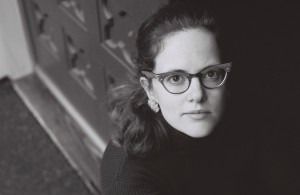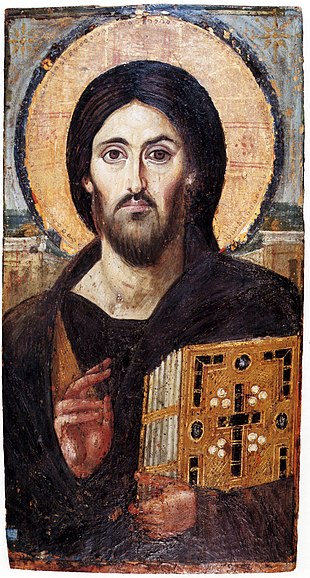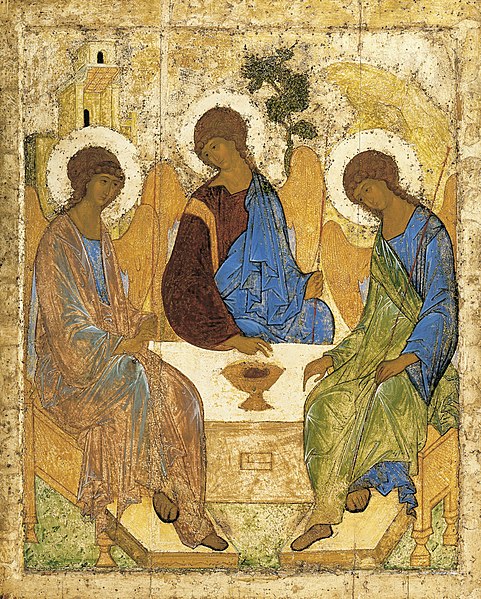Sorry for the hiatus between report #2 and this final report. I had another conference to prepare for and attend.
See Report #1 and Report #2. Here is the continuation...
On Friday afternoon, Erin McGraw, who taught the fiction class, read her short story "The Penance Practicum," about an experienced, self-confident priest who teaches at a seminary and a shy, awkward priest-in-training who is one of his students, and their role reversal when the rubber meets the road.
In the evening after supper, there was a "live reading" of Arlene Hutton's play As It Is in Heaven, about a Shaker community in Kentucky whose world is turned upside down when some newcomers arrive claiming unusual spiritual experiences. At the end everyone sang along for the Shaker song "Simple Gifts."
That was followed by evening worship and then another open mic night with poetry, fiction, memoir, and song. A great variety of wonderful stuff, including two singer-songwriters who performed at the piano their renditions of a couple of old Negro spirituals, which they wrote as assignments for the songwriting class. I neglected to mention a couple of the more memorable ones from the first open mic night on Monday evening: one guy read some poetry and did juggling. We were hoping he'd do them simultaneously (he could have if he'd memorized the poetry), but he didn't. Dale Fincher, an actor, recited a well-known poem (I forget which one now) and an excerpt from C.S. Lewis's Screwtape Letters -- very well performed.
 The Silent Auction began Friday afternoon as well, and we were encouraged to peruse the tables of things and experiences being offered, and bid on them through the rest of the week. The funds raised would go to support Image's programs. There were original works of art, books, CDs, a retreat, etc. Lauren Winner auctioned off two pairs of her signature funky retro glasses. Someone whose husband works for NPR offered a personal tour of the NPR headquarters in Washington, D.C. (I won that item and am looking forward to planning a trip to D.C. at some point to claim my prize!)
The Silent Auction began Friday afternoon as well, and we were encouraged to peruse the tables of things and experiences being offered, and bid on them through the rest of the week. The funds raised would go to support Image's programs. There were original works of art, books, CDs, a retreat, etc. Lauren Winner auctioned off two pairs of her signature funky retro glasses. Someone whose husband works for NPR offered a personal tour of the NPR headquarters in Washington, D.C. (I won that item and am looking forward to planning a trip to D.C. at some point to claim my prize!)
 Saturday afternoon, Frederica Mathewes-Green, a warm and engaging Orthodox speaker, gave a presentation on Icons. It was scintillating. She explained a misunderstanding about praying with icons. You don't stare at the icon, hoping to be transported in some trance-like way into the presence of God through them; rather, you come into the room where the icons are, close your eyes and pray, just as you would pray any time. They are companions, like the photos of ancestors you might have on your wall. She led us through some of the history of icon painting, from the ancient Jewish icons in the synagogue at Dura Europos (Syria), to early Christian art in the Catacombs, mosaic icons, through the Iconoclasm Controversy and right on up to the present. One influence along the way was the Coptic Fayoum mummy portraits, painted on wooden boards. She also noted that the earliest depiction of Christ crucified is graffiti making fun of it, ca. 200 AD. It wasn't until the 6th century that the first Christian art depicting the crucifixion emerged, and images of Christ finally looked like we see him depicted in art today. The most fascinating icon she told us about was the famous Christ of Sinai icon. She covered the left side of his face and then the right, showing us that each side has a completely different expression. One side is more penetrating, offering diagnosis. The other side is listening, patient. It is quite an unsettling experience, looking at it.
Saturday afternoon, Frederica Mathewes-Green, a warm and engaging Orthodox speaker, gave a presentation on Icons. It was scintillating. She explained a misunderstanding about praying with icons. You don't stare at the icon, hoping to be transported in some trance-like way into the presence of God through them; rather, you come into the room where the icons are, close your eyes and pray, just as you would pray any time. They are companions, like the photos of ancestors you might have on your wall. She led us through some of the history of icon painting, from the ancient Jewish icons in the synagogue at Dura Europos (Syria), to early Christian art in the Catacombs, mosaic icons, through the Iconoclasm Controversy and right on up to the present. One influence along the way was the Coptic Fayoum mummy portraits, painted on wooden boards. She also noted that the earliest depiction of Christ crucified is graffiti making fun of it, ca. 200 AD. It wasn't until the 6th century that the first Christian art depicting the crucifixion emerged, and images of Christ finally looked like we see him depicted in art today. The most fascinating icon she told us about was the famous Christ of Sinai icon. She covered the left side of his face and then the right, showing us that each side has a completely different expression. One side is more penetrating, offering diagnosis. The other side is listening, patient. It is quite an unsettling experience, looking at it.  Frederica told us about someone who, upon looking at this icon, said, "I feel that he's looking into my soul, and I didn't even think I had a soul." She also gave her most tweeted quote of the week at this point: "Everyone wants to be transformed, but nobody wants to change." The three "greatest hits" of iconography are the Christ of Sinai, the Rublev Trinity, and the Theotokos of Vladimir, which has the Virgin Mary and the Christ child cheek-to-cheek. Overall it was a very enlightening talk.
Frederica told us about someone who, upon looking at this icon, said, "I feel that he's looking into my soul, and I didn't even think I had a soul." She also gave her most tweeted quote of the week at this point: "Everyone wants to be transformed, but nobody wants to change." The three "greatest hits" of iconography are the Christ of Sinai, the Rublev Trinity, and the Theotokos of Vladimir, which has the Virgin Mary and the Christ child cheek-to-cheek. Overall it was a very enlightening talk.
Saturday evening featured a concert by the folk-gospel duet Welcome Wagon, consisting of a pastor and his wife, Vito and Monique Aiuto. They'd been teaching the songwriting class for the week. I skipped the concert because I was too tired, but came back for the final evening worship.
This is as good a time as any to sum up the five evening worship times. Gawain de Leeuw, an Episcopal priest, led us in simple and moving prayers. Various people read Scripture. Singer songwriter Jan Krist played guitar as we sang a different hymn or worship song each evening ("I Love to Tell the Story", "Lord of the Starfields" by Bruce Cockburn, "Be Thou My Vision", "Grace That Is Greater than All Our Sin" sung to a new tune by Brian Moss, and "Now Thank We All Our God"); she also performed one of her own songs each night, including one she'd written during the week to accommodate her lower and reduced voice register due to a sore throat. Kathleen Norris gave brief homilies each evening. I've already mentioned the first in my Report #1. Tuesday she focused on the word Thanks, and gave a meditation on Salt. The poems she read that night were "Matthew 5:13-16" by David Craig, "Planting Onions" by Jane Flanders, and "Primary Wonder" by Denise Levertov. Wednesday, the word she focused on was Trust, and she spoke on Ps 16 which we'd read. The poems she shared were "Green Apples" by Ruth Stone, "Beulah" by Ohio poet Lynn Powell, and "Serenity" by Chilean poet Gabriela Mistral. Friday we had a reading from the Book of Wisdom, and Kathleen gave us some wisdom from women of wisdom, including Evelyn Underhill, whose feast day it was (June 15), and the Desert Mother Amma Matrona who said "We carry ourselves wherever we go; we cannot escape temptation by mere flight." The poems she read that night were "The Very Self" by Rafael Campo, "A Short Testament" by Anne Porter, and her own "Lavonne's Mantlepiece" (sic) from "Three Wisdom Poems". Finally, on Saturday, Kathleen spoke on Love. What God wants of us is love. That's simple, but our life's task is learning to love. She ended with the poems "Echo" by Christina Rossetti, "The Higher Arithmetic" by David Dwyer (Kathleen's late husband), and her own "The Wedding in the Courthouse".
After worship, we were treated to a slide show of candid photos people (including the pro photographer from SPU that Image brought along) had taken throughout the week. There were closing remarks and thank yous. The works of art produced by the students in the Assemblage and Figure Painting classes were on display: pieces of whimsy and profundity, expertise and skill acquisition.
There followed a farewell reception back in the lounge of the dorm. We imbibed good wine, had good conversations, and sang along to Alissa Wilkinson playing classic sing-along songs on the piano such as Billy Joel's "Piano Man" and The Beatles' "Hey Jude". (Those of us singing couldn't remember all the lyrics, so we looked them up online on our handheld devices and sang from those; a first for me.)
The tagline for the Glen Workshop is "A week can change a life." Let it change yours some year. Look for future Glen Workshops (Glen West in Santa Fe, or Glen East in South Hadley, MA) at http://www.glenworkshop.org.
EDIT: I forgot to include a link to the last video post card that Image created: Philip Maurer
2 comments:
Very nicely described, Rosie! Quite a varied week. Thanks especially for taking the time to share the thoughts about icons. I do have a question about that. Do you think that what Mathewes-Green described, sitting in a room with an icon, eyes closed, is "official" Orthodox practice? Or just her private practice? And, depending on the answer to that, has this always been the case? I feel fairly certain that for most of the history of the Church, the Icon was supposed to be used for visual meditation, not for companionship. So I'm curious if this is personal and idiomatic, or a new development in response to "Western" critique, or what. Thanks!
Good question. I don't know what she'd say to that. I'd always thought it was about visual meditation as well. Mind you, not that I think Western believers have as much of a problem with that anymore as we used to. Mathewes-Green is a convert to Orthodoxy, so she's probably more Western in her thinking than the dyed-in-the-wool Orthodox. There are also some books by Catholics and Protestants on praying with icons, though. Henri Nouwen's Behold the Beauty of the Lord: Praying with Icons and Rowan Williams's The Dwelling of the Light: Praying with Icons of Christ, for example. Mathewes-Green's own book on it is
The Open Door: Entering the Sanctuary of Icons and Prayer.
The amazing Eighth Day Books has a large collection of books on iconography, most of which they had with them at the book table at the Glen, along with many icons to purchase. It was a feast for the eyes!
Post a Comment